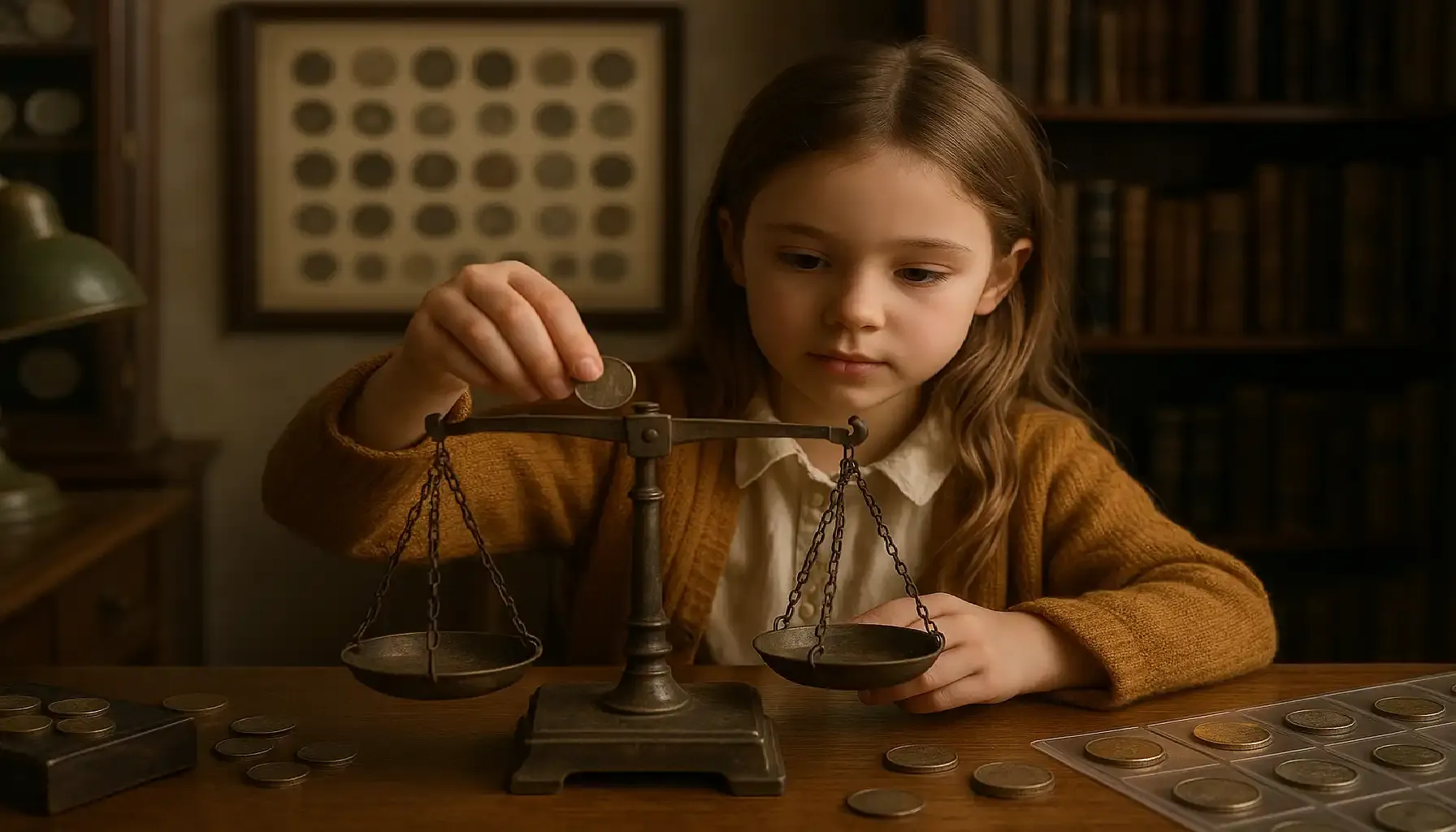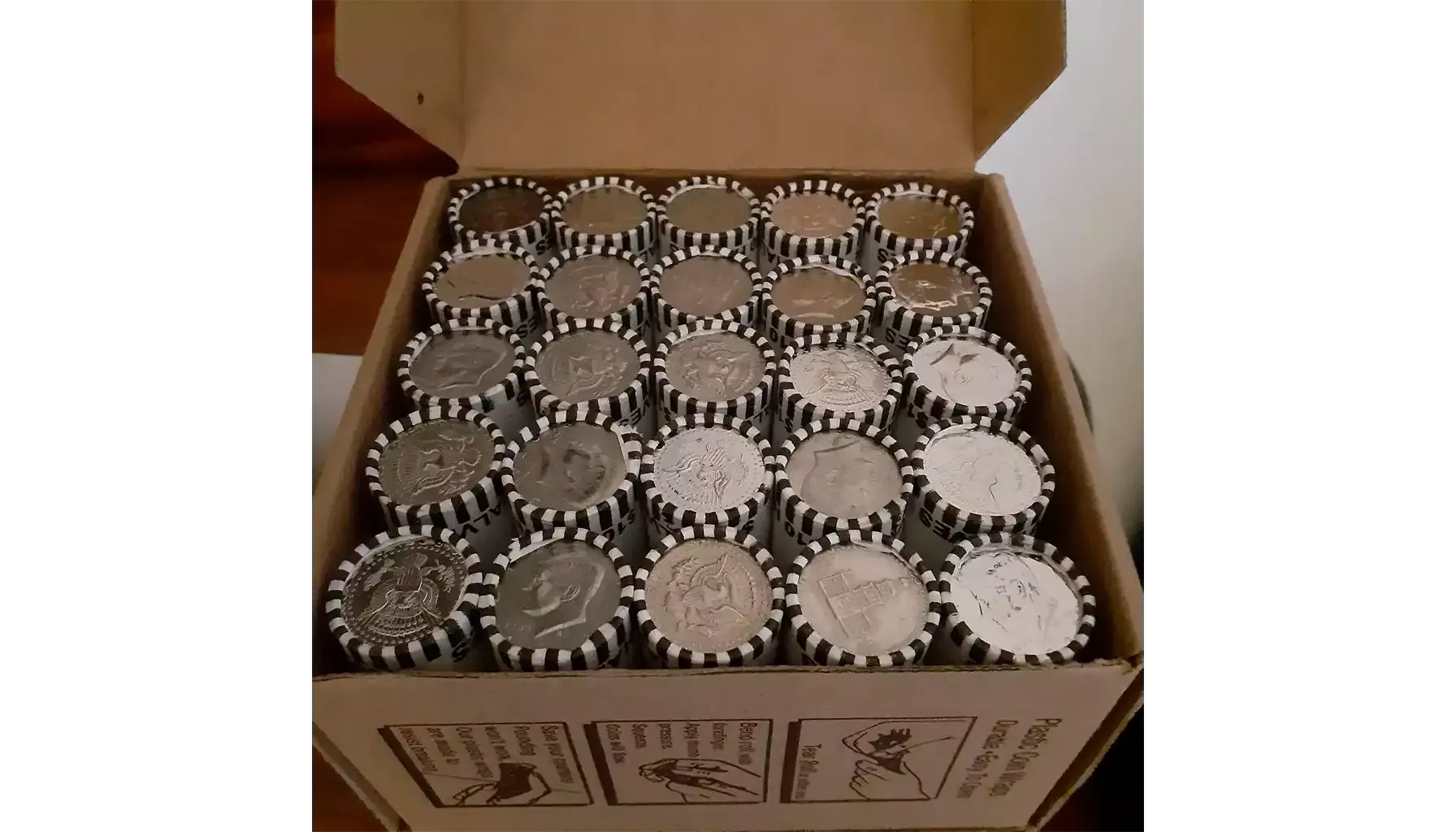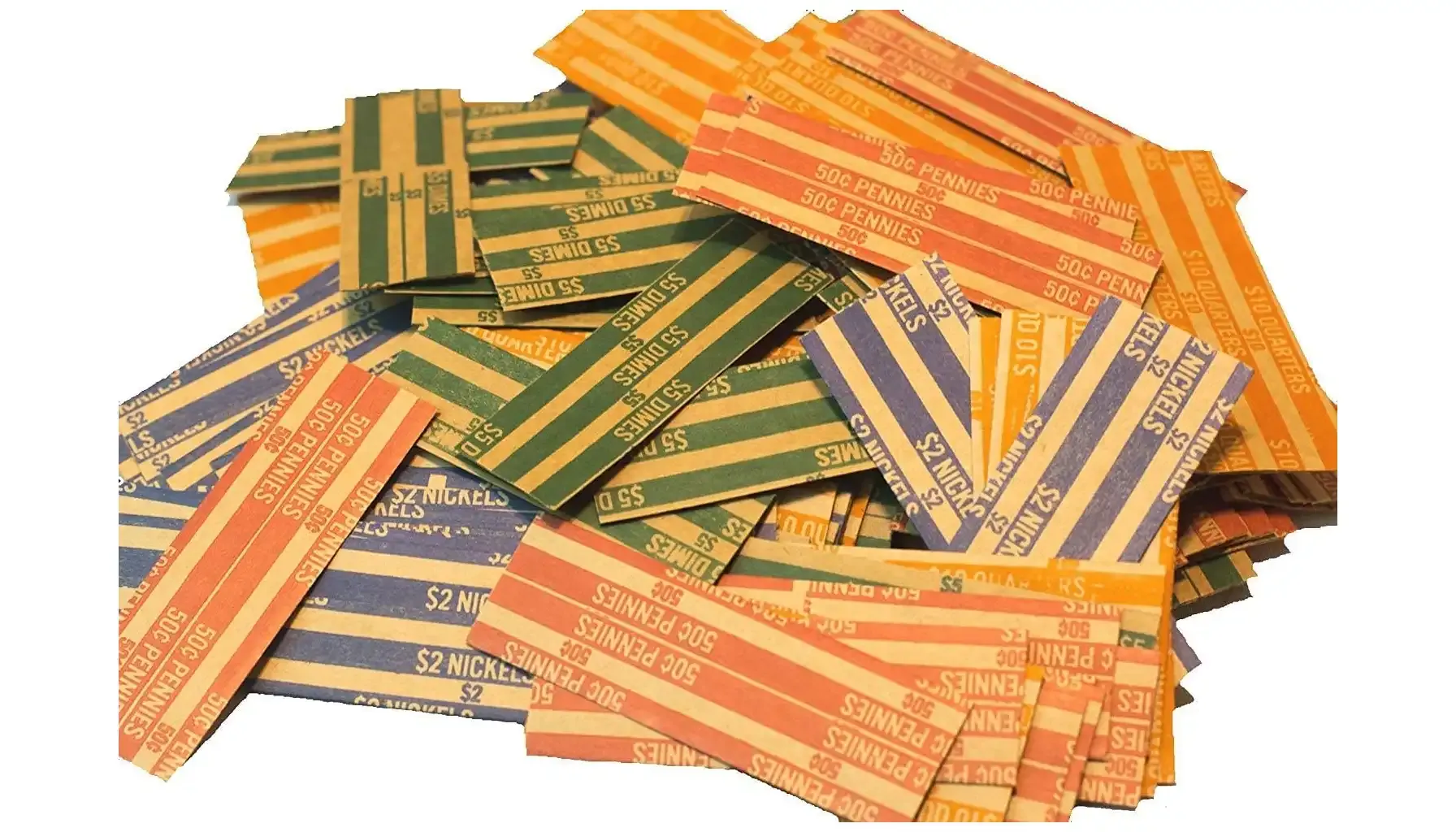Contents:
A small coin of only 1 cent may build a valuable asset, no matter how unassuming the roll can be.
The definition of a roll may seem obvious: it is an arrangement of coins bearing the same characteristic or attribute that distinguishes them from the rest. For those who wish to assemble a fine, valuable collection, however, this concept appears to be a bit more complex and is worth exploring to the core.
So, here come the major questions: What is the standard number of coins in a roll? How much is a roll of pennies worth? And which pennies should be paid attention to when packed in a roll? Master the art of rolling, check coin value, and learn more about the secrets behind valuable finds.

What Is a Penny? History and Definitions
The penny, as such, is the smallest current denomination in the US, officially valued at one cent. Its history dates back to the release of the Fugio 1787 cent, i.e., the first official circulation coin ever minted on the territory of the United States. The name of this coin is louder than any other attribute it may boast.
When the authorities responsible for coin production at the dawn of the United States Mint were in search of a proper numismatic creation, they chose the word "penny", i.e., a nod to its British predecessor, even though the official name was the one-cent coin. Although this coin turned into a stable unit of currency, its design has undergone numerous changes, with aspirations to get innovative, relevant numismatic creations, illustrative of their times. This comes down to composition, too.
Here is a quick overview of all major penny types that may be found in rolls:
Large Cents (1793–1857) | Small Cents (1856–Present) |
Flowing Hair Chain Cent (1793) | Flying Eagle Cent (1856–1858) |
Flowing Hair Wreath Cent (1793) | Indian Head Cent (1859–1909) |
Liberty Cap Cent (1793–1796) | Lincoln Wheat Cent (1909–1958) |
Draped Bust Cent (1796–1807) | Lincoln Memorial Cent (1959–2008) |
Classic Head Cent (1808–1814) | Lincoln Bicentennial Cents (2009) |
Coronet (Matron Head) Cent (1816–1839) | Lincoln Union Shield Cent (2010–present) |
A Coin Roll: What Does This Mean and Which Ones Exist?
Typically, a coin roll is a cylindrical bundle of coins, usually wrapped in paper or stored in plastic tubes, which are widely used for easy handling, storage, banking, or transportation. There exist standards established by the US Mint that define how many pennies in a roll are, which patterns other denominations are to follow, and what the total value of the entire assemblage is.
Here are the standard US coin roll types:
Penny (1C) – 50 coins ($0.50)
Nickel (5C) – 40 coins ($2.00)
Dime (10C) – 50 coins ($5.00)
Quarter (25C) – 40 coins ($10.00)
Half Dollar (50C) – 20 coins ($10.00)
Dollar Coin ($1) – 25 coins ($25.00)
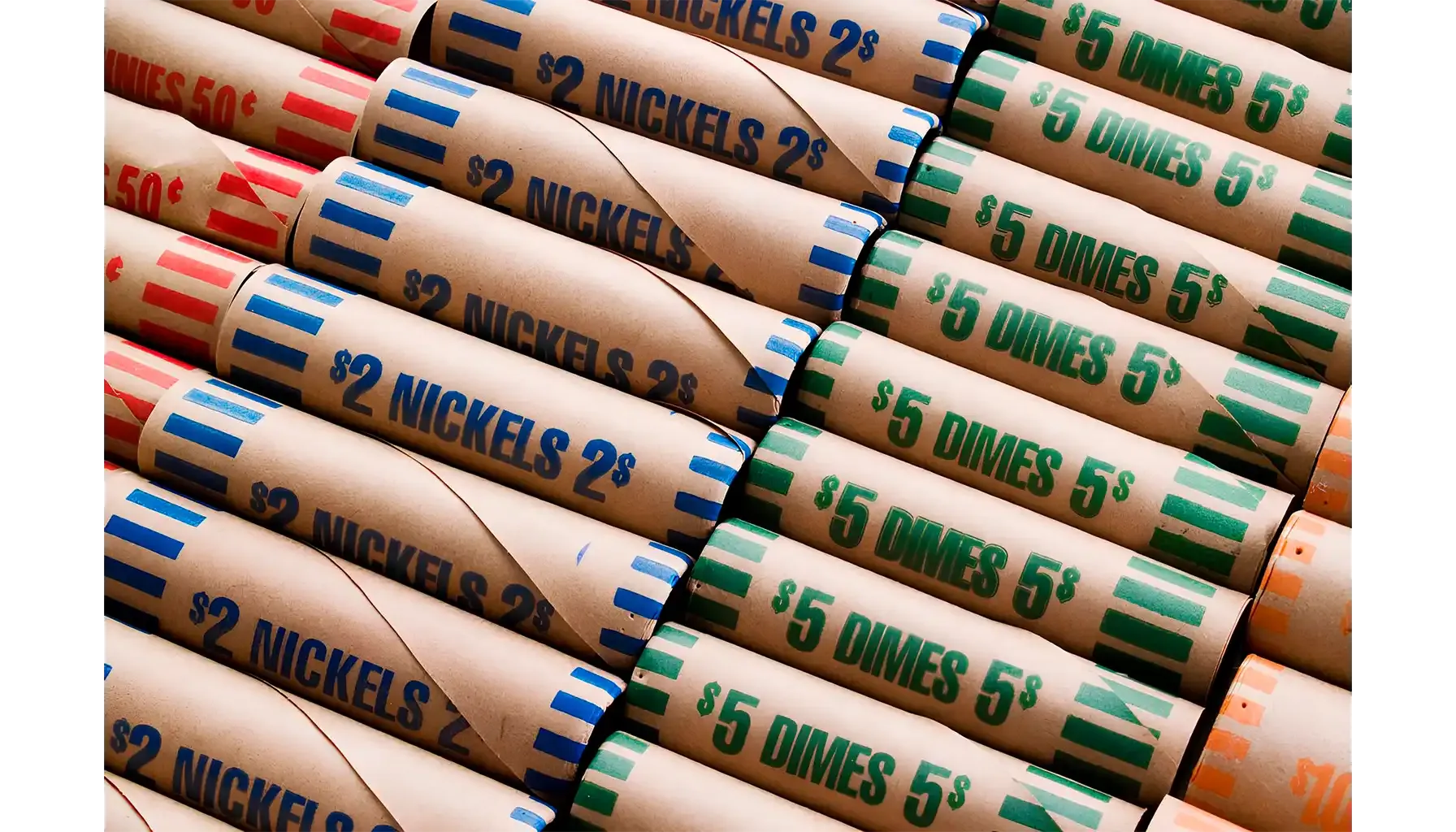
So, how many pennies come in a roll? When referring to the penny rolls, it is vital to acknowledge its physical characteristics: typically wrapped in paper or plastic of red color, containing 50 coins, and measuring about 3 inches (=7.62 centimeters) in length with a face value of 50 cents.
By the way, how much does a roll of pennies weigh? This mainly depends on the metal composition of the coins included. Having done all the calculations, one may learn that a standard 1-cent coin roll should weigh approximately 125 grams when made of zinc (post-1982) or 155.5 grams (5.5 ounces) when made of copper (pre-1982).
Why Does the Number Matter?
Although it may feel unnecessary or even superfluous, understanding the right quantity of pieces in a roll may save one from getting scammed or failing to store/transport/sell coins properly. Indeed, the standard roll of 50 pennies might seem predictable, but the value within can vary depending on the contents.
So, in broader terms, the roll count creates a framework for calculating probabilities. Should you be searching for some unique, rare instances like a 1909 VDB penny minted in San Francisco or a doubled die cent, it might be reasonable to know how many chances you have in each roll. This is how professional numismatists make predictions and set realistic goals at last. For dealers, the quantity ensures accurate pricing, packaging, and inventory control.
A roll of 51 or 49 coins means uncontrolled changes have been made (e.g., through accidental miscounts, machine errors, or signs of tampering). In such a case, the 1 roll of pennies value may fall for good.
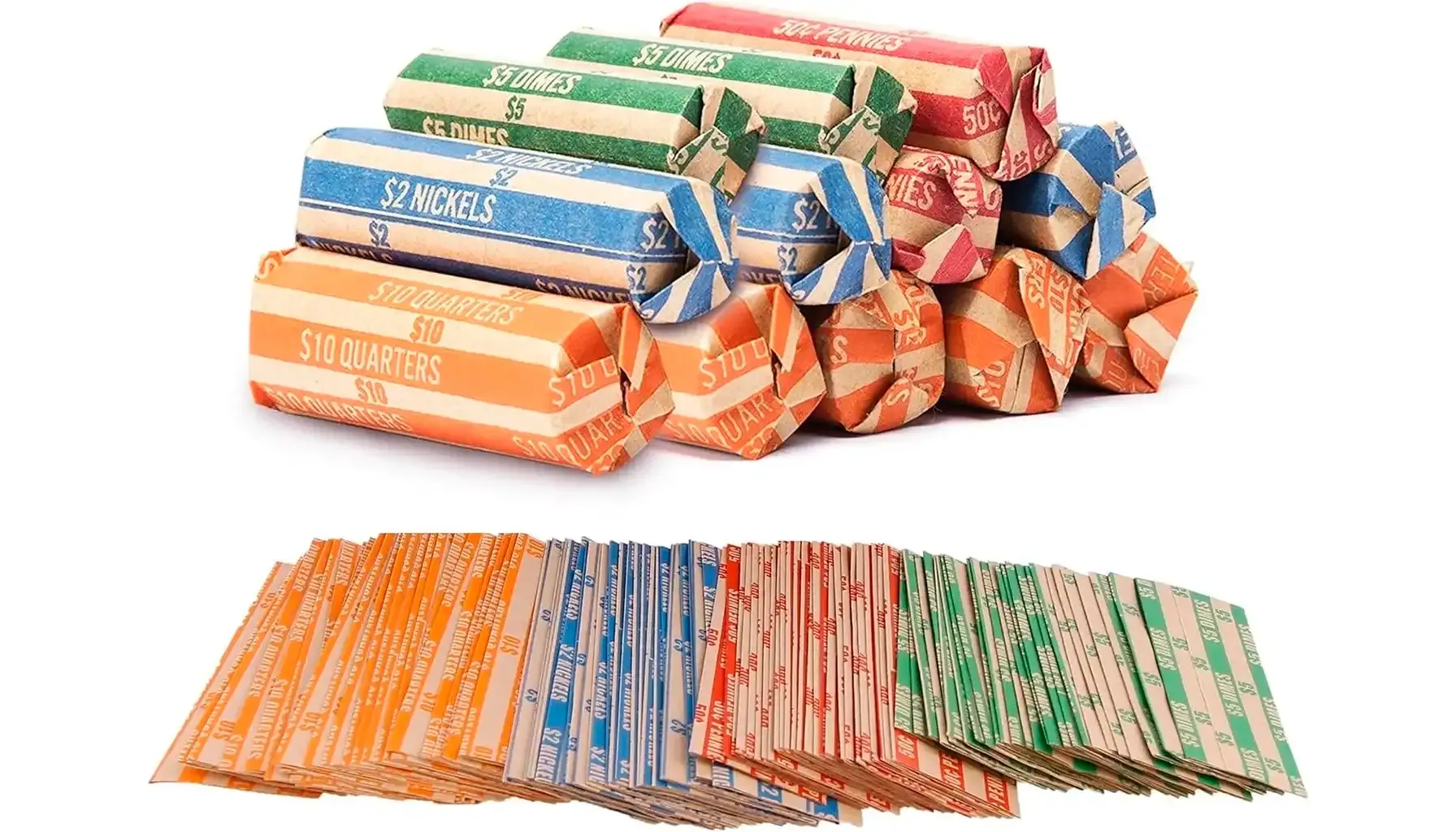
The Value Inside the Roll of Pennies: What to Look For
Although the face value of each roll of 1-cent pieces should be 50 cents only, its true worth can go much higher, depending on what is inside. Here is the collector's truth: search rolls for unique, exclusive, one-of-a-kind instances, for they can be worth hundreds or even thousands of dollars.
Here are a few notable categories to watch (however, exceptional pieces may be found in every series and every year):
Wheat Pennies (1909–1958): Especially early dates, e.g., the 1909-S V.D.B. or 1940 cent
Key Dates & Low Mintage Coins: Coins from rare years or specific mints (e.g., the 1922 penny)
Error Coins: Off-center strikes, double dies (e.g., the famous 1955 Double Die), or clipped planchets
Copper Pennies (Pre-1982): These are heavier and contain nearly 2.5 times their face value in copper
Proof or BU Coins: Occasionally, uncirculated or mirror-like proof coins slip into circulation, too
Related article: Rare & Beautiful: Top 25 Most Valuable Pennies to Look For
Pennies That Are Worth Hunting
The hunt begins! When it comes to rare finds, one should note that rolls may hide extraordinary treasures. To better illustrate the potential value of such arrangements, we have compiled a list of samples with the highest known auction records.
And remember: some rare varieties may still be undiscovered, waiting inside a roll yet to be opened.
1914-D Lincoln Wheat Cent

Auction Record: $158,625 for MS66+RD
This variety is one of the most difficult coins to obtain, with a relatively low mintage of just 1,193,000. High-grade versions are incredibly rare, and even circulated examples can fetch hundreds.
1943-D Bronze Cent
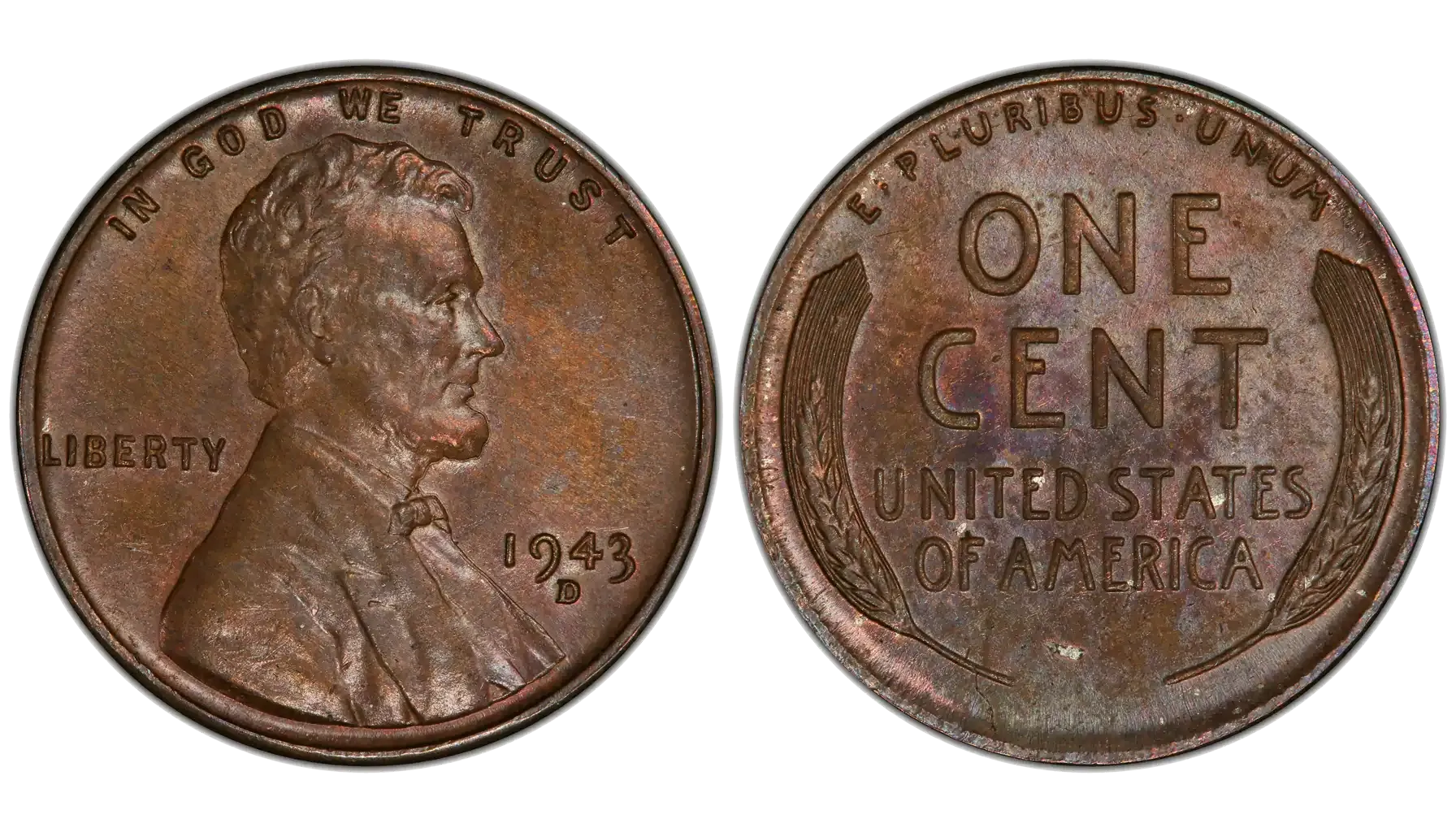
Auction Record: $840,000 for MS64BN
During WWII, pennies were supposed to be made of zinc-coated steel, but a few were accidentally struck in bronze. The 1943-D bronze cent is one of the rarest and most valuable US coins ever discovered.
1944 Steel Cent
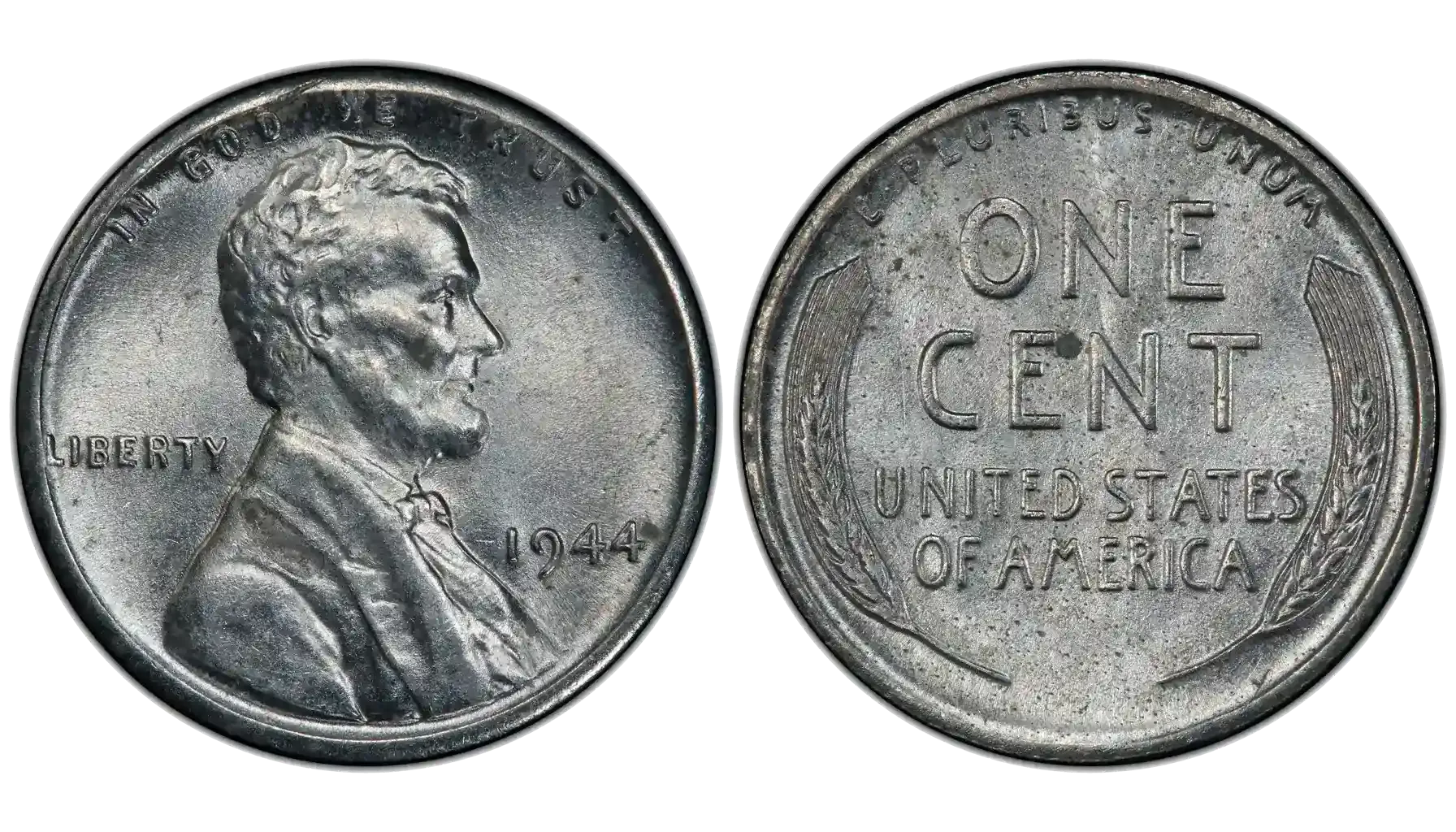
Auction Record: $180,000 for MS64
A minting anomaly reversed the wartime composition shift – a few 1944 pennies were struck on leftover steel blanks from 1943, which made them unique and exclusive. These are among the most famous transitional error coins in the series.
1969-S Doubled Die Obverse Cent
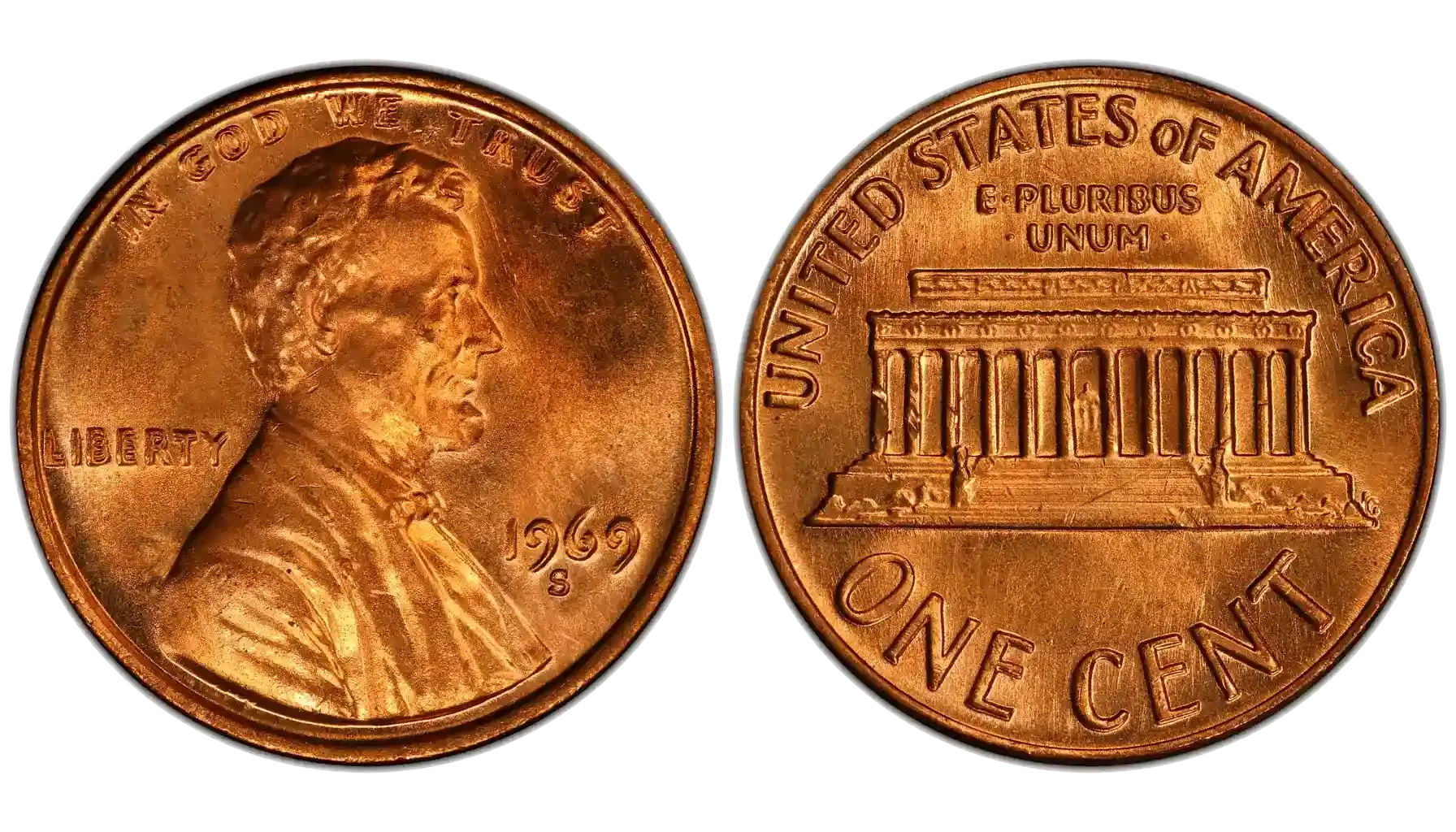
Auction Record: $126,500 for MS64
Finally, here comes a legendary anomaly, i.e., the dramatic doubled die, which can easily be visible on the date and some inscriptions, including "LIBERTY". Although they are extremely rare, examples might still be found in circulation, and the hunt has never stopped either way.
Related article: 1969 Penny: A Small Coin, a Big Story
1992 Lincoln Cent – Close AM
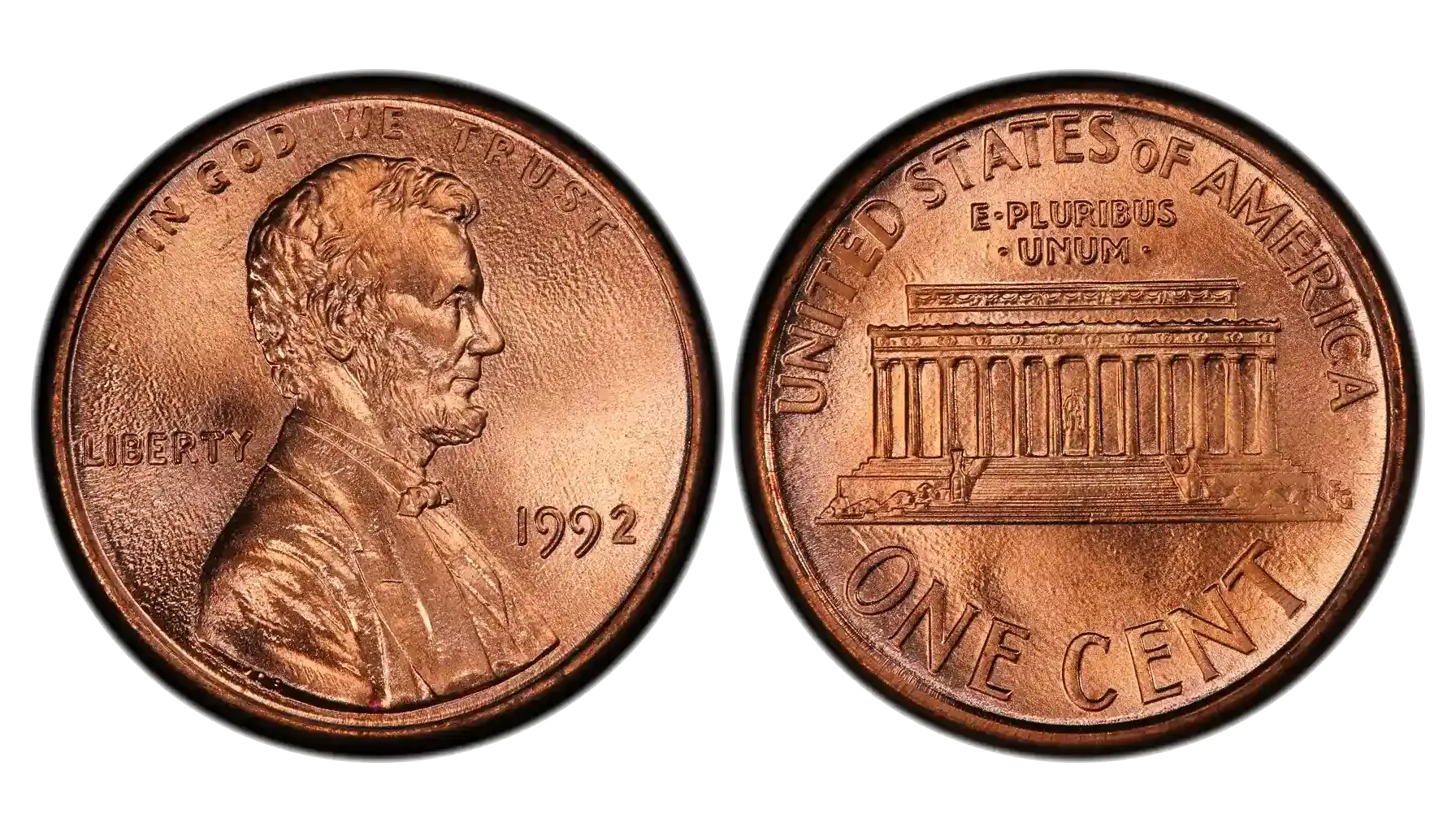
Auction Record: $25,850 for MS67RD
Although the market value of this instance is not as impressive as that of the previously mentioned examples, it is a peculiar variety that features the letters "A" and "M" in "AMERICA" nearly touching, unlike the usual wide spacing. Originally, these were intended only for coin collections, but a few mistakenly made it into circulation. Such a wonderful circumstance that gave birth to a legend.
2017-P Lincoln Shield Cent

Auction Record: $4,500 for PO1RD
The mintage figures may overwhelm, yet the rule of quantity does not work as usual in the following case. This is the only US penny ever to bear a “P” mintmark, issued to commemorate the Philadelphia Mint’s 225th (!) anniversary.
The Tools You Might Need for Coin Hunt
Roll hunting is an art, but just like any other form of craft, it requires special equipment and necessary tools to make it both effective and appealing. Before you start the search, we highly recommend that you obtain the following instruments and commence when prepared only.
Basic Physical Tools
Magnifying Glass or Jeweler’s Loupe: Needed to spot mint marks, errors, and fine details.
Digital Scale: To identify underweight or altered coins.
Coin Tubes or Storage Boxes: To organize your finds by type, year, or condition before taking them into the roll.
Gloves: To handle coins without leaving fingerprints or scratches.
Notebook or Inventory Sheet: To track what you have managed to find and what you are still searching for.
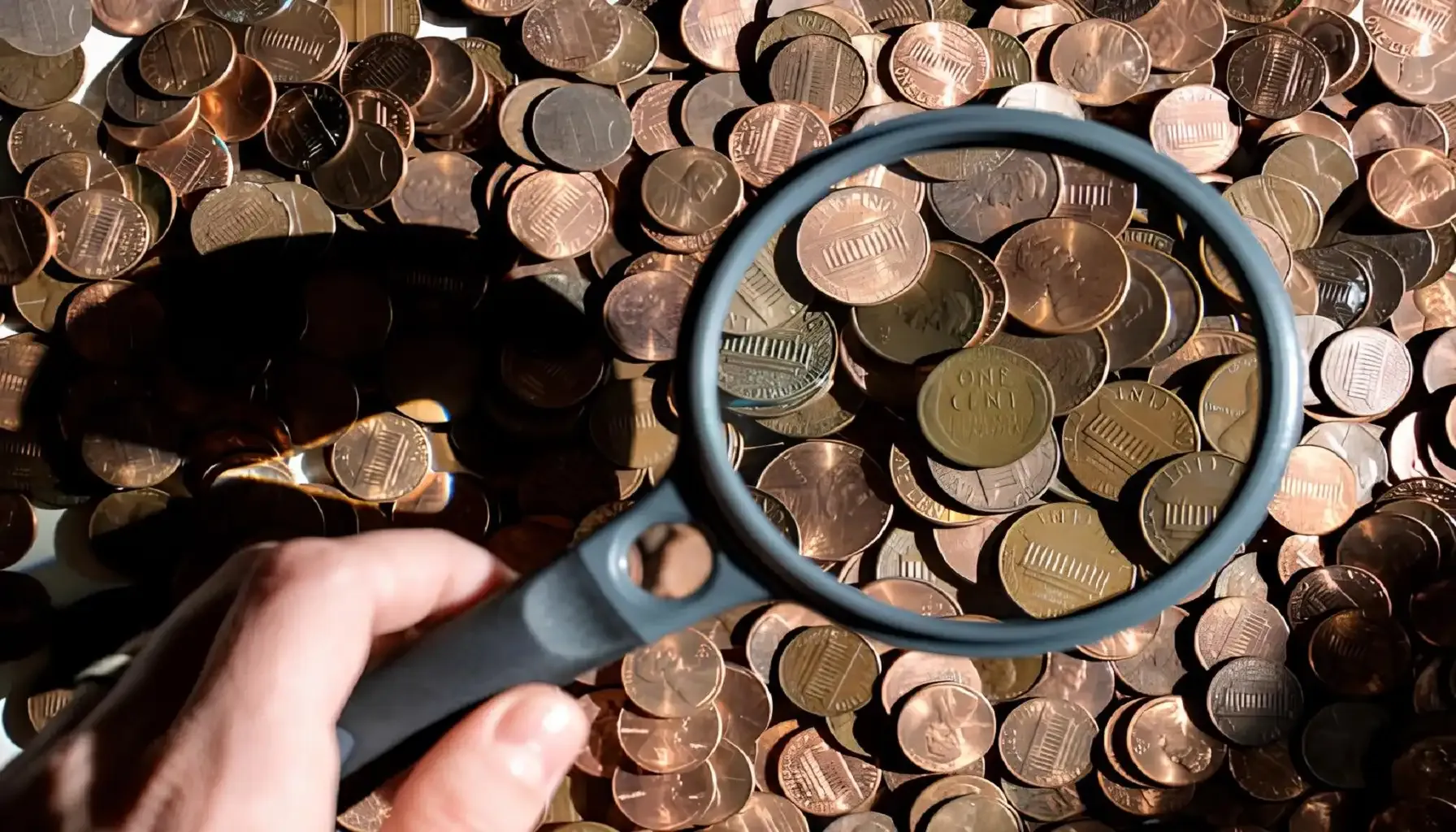
Digital Support
Special Numismatic Apps (e.g., Coin ID Scanner): To identify coins, detect errors, explore numismatic history, review current trends, estimate values, manage collections, and verify authenticity in an instant.
Online Databases & Forums (like PCGS or NGC): To explore valuable community insights and ongoing market trends in action.

